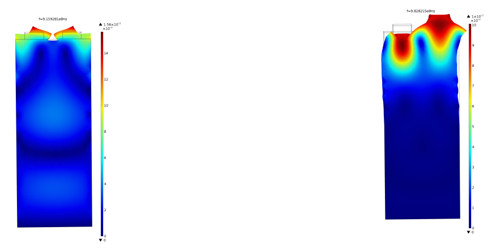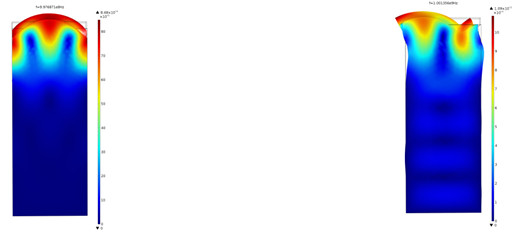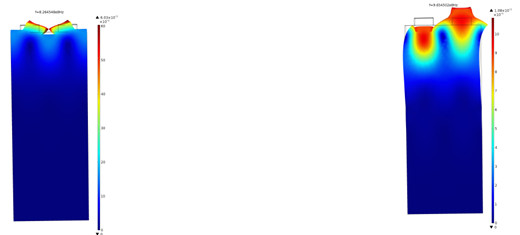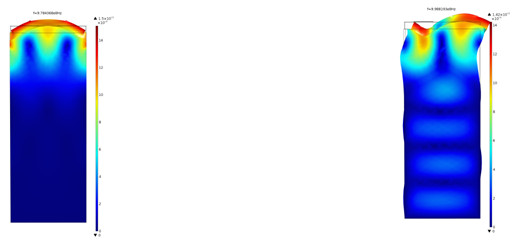Keywords: Surface acoustic wave, Resonator, Phononic crystal, Reflecting grating
Many researchers are working on reducing energy loss of the Surface Acoustic Wave (SAW) for high performance resonators. Two dimensional (2-D) phononic crystals (PCs) with specified band gaps can be used as gratings for SAW resonators. Any incident wave can be reflected effectively by the 2-D PCs when the working frequency is within the band gaps of the 2-D PCs.
A high performance reflecting grating structure with PCs of cylindrical holes had been proposed, as well, a 2-D PCs reflecting grating structure with tungsten stubs placing on the conventional gratings periodically was also presented. However, they did not provide the accurate value of reflectivity of 2-D PCs reflecting gratings.
Researchers recently use a reflecting gratings structure based on 2-D PCs and calculate its reflectivity in both the x and y direction by analyzing its resonant modal with the finite element method (FEM).
To analyze the reflectivity of this reflecting grating, resonant modal is analyzed with the FEM using the commercial software COMSOL Multiphysics. In order to compare the properties of this structure with the conventional gratings, the resonant modal of conventional gratings is also analyzed.
Reflectivity with a single period of conventional reflecting grating and the 2-D PCs reflecting grating are calculated respectively in both the x and y direction. The resonant and anti-resonant frequencies of conventional reflecting grating (see Fig. 1) are 915.93MHz and 982.82MHz in the x direction, and the reflectivity is 11.07%.There are 997.68MHz and 1001.36MHz in the y direction (see Fig.2) with the reflectivity of 0.58%. The resonant and anti-resonant of the 2-D PCs reflecting grating in x and y direction are shown respectively in Fig.3 and Fig. 4, with the reflectivity of 24.37% and 3.24%.
Comparing the reflectivity of the conventional reflecting grating and the 2-D PCs reflecting grating both in the x and the y direction, it can be seen that the reflectivity of the 2-D reflecting grating is 2.2 times higher than conventional reflecting grating in the x direction and 5.6 times in the y direction. These results demonstrate that the 2-D PCs reflecting grating can be used in the SAW resonators to improve their performances.

(a) The resonant modal (b) The anti-resonant modal
Fig.1 The modal of conventional gratings in x direction (Image by YUAN).
(a) The resonant modal (b) The anti-resonant modal
Fig.2 The modal of conventional gratings in y direction (Image by YUAN).
(a) The resonant modal (b) The anti-resonant modal
Fig.3 The modal of 2-D PCs reflecting grating in x direction (Image by YUAN).
(a) The resonant modal (b) The anti-resonant
Fig.4 The modal of 2-D PCs reflecting grating in y direction (Image by YUAN).
References:
YUANCe, LI Honglang CHEN Jinling, TIAN Wenjia, TIAN Yahui, HE Shitang. An Approach to Calculate Reflectivity of the 2-D Phononic Crystals Reflecting Gratings in Two Directions. Proceedings of the 2014 Symposium on Piezoelectricity, Acoustic Waves and Device Applications (pp.412-414, November 2014).
Contact:
YUAN Ce
School of Optoelectronics, Beijing Institute of Technology, 100081 Beijing, China
Institute of Acoustics, Chinese Academy of Sciences, 100190 Beijing, China
Email: yuan_ce123@yeah.net


